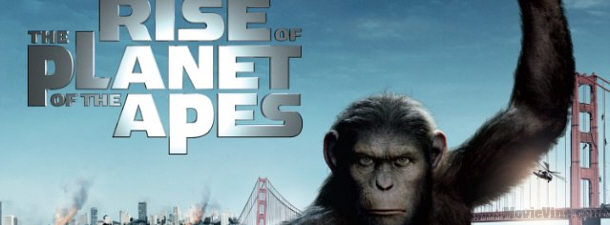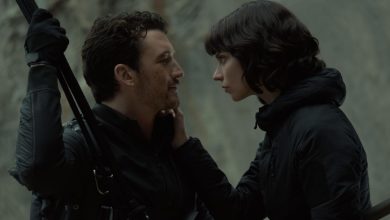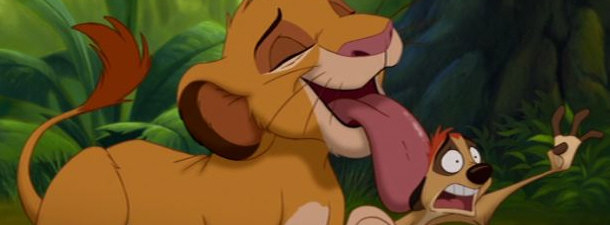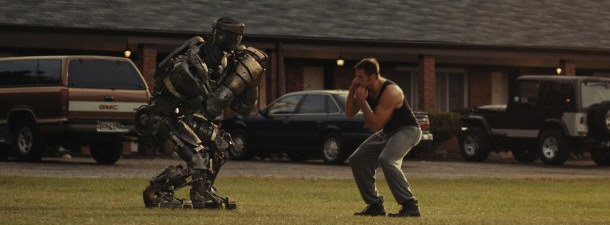
Before LOST, Star Wars, or even Star Trek, there was Planet of the Apes. At this point, Apes is so ingrained within the pop culture mind set that those who haven’t even seen the film are aware of the film’s major twist and key moments. But did you know there were four sequels? And a TV show?? From 1968 to 1973 Twentieth Century Fox regularly pumped out sequels to the massive sci-fi hit, closing the series for good with Battle for the Planet of the Apes. For the uninformed, here is a break down of each film, so when you wait in line for Rise of the Planet of the Apes this weekend you can turn to the guy behind you and say: “Did you know…?” with all the smug authority only the internet can provide.
 First up, Planet of the Apes
First up, Planet of the Apes
What Happens? This is the easiest one. Three astronauts land on a mysterious planet that feels familiar. Captain Taylor (played by Charlton Heston) quickly becomes our main character when Apes on horseback come over the horizon, killing one astronaut and separating Taylor from his second mate, eventually cutting out the second mate’s brains. Eventually Taylor comes into the care of Cornelius and Zira, scientists who care for him after he is wounded and, upon discovering he can talk, help him reach the Forbidden Zone, a place Apes never venture. It is here that the two part ways, and Heston comes upon a bombed out Statue of Liberty, and it’s revealed that nuclear war left humanity weakened and prone to hostile take-over by the Apes.
Is It Good? Yes. Even by today’s standards the make up is incredible, the pacing is near perfect, and Heston provides some of the most iconic lines in all of cinema.
Did You Know That… Twilight Zone creator Rod Sterling wrote the screenplay? Sterling, famous for favoring the weird and bizarre was also adamant about keeping the social criticisms and ideals in the film, which makes sense seeing as most Twilight Zone episodes also featured political and social allegories beneath the mind-bending situations.
 Beneath the Planet of the Apes
Beneath the Planet of the Apes
What Happens? Brent, another astronaut sent to look for Taylor and his missing crew lands on the planet and, honestly, goes through a pretty much beat for beat rehash of the first film. Towards the end, he discovers the remains of New York City and a race of telepathic mutants who worship a massive nuclear bomb. Brent and gal pal Nova reunite with Taylor just as the Apes invade the mutants’ underground lair, killing Nova and Brent. Taylor is wounded, but still summons the strength to set off the doomsday device, destroying the entire planet. The screen fades to white, and a narrator chimes: ” In one of the countless billions of galaxies in the universe, lies a medium-sized star, and one of its satellites, a green and insignificant planet, is now dead.” How’s that for a downer ending?
Is It Good? Sort of. The rehash of the original is irritating at first, particularly since the actor playing Brent looks so much like Charlton Heston there are times you feel like you’re watching the first movie. But that ending. My god. It’s worth seeing for the “Holy crap” factor alone.
Did You Know That… Charlton Heston agreed to do the sequel but on three conditions. One: that he only got fifteen minutes of screen time. Two: that his character would die. And three: that he would get to destroy the planet. He figured it’d be hard to make another Planet of the Apes film without an actual planet to work with. Of course, he was wrong….
 Escape from the Planet of The Apes
Escape from the Planet of The Apes
What Happens? Remember the ape scientists Cornelius and Zira from the original? Before their planet explodes the pair hijack Taylor’s ship and blast off, eventually winding up in 1970s America. The advanced Apes are welcomed warmly at first, but when it’s discovered they will rule over humans, things get a bit nasty. So nasty in fact that people hunt down and kill the couple, as well as their newborn son, Milo. Or did they? It is revealed that little Zira switched Milo with another baby from a traveling circus, and Milo lives on under the care of Armando, an activist portrayed by Ricardo Montalban (KHANNNN!!!).
Is It Good? Yes. Better than the first sequel, at least. This is the first film in the series with only three Apes appear throughout the entire running time, and the newfound attention to the make up shows. There’s also some heady discussions about faith and destiny and all that, and a LOT of God talk that gives the viewer plenty to think about.
Did You Know That… After sitting out Beneath because of a scheduling issue, Roddy McDowall rejoins the franchise as Cornelius, and even though Cornelius dies here McDowall continues to appear in the two subsequent films as Milo/Caesar, making him the actor most associated with the franchise by Apes enthusiasts.
 Conquest of the Planet of the Apes
Conquest of the Planet of the Apes
What Happens? A deadly virus kills every dog and cat on Earth. Apes become the pet of choice, but they prove themselves so smart and adaptable they’re soon turned into slaves instead. 18 years after the events of “Escape,” America has turned into a fascist state and apes are trained for their servitude at a horrifying facility. Armando is arrested, and Milo (now known as Caesar, no reason for the name change is given) joins the ape slaves. After seeing the cruel conditions for himself, he teaches his fellow apes the art of guerilla warfare and leads them in a bloody rebellion that threatens to destroy civilization as we know it.
Is It Good? Somewhat. It is cheesy at times, but the weird time paradox created by Zira and Cornelius giving birth to the ape that would provide the uprising that in turns create the society they grow up in is classic sci-fi. Before James Cameron was monkeying around with time travel (Ha! get it?) the Apes films were right there, providing plenty of logic questions that unfortunately aren’t really answered in the final film.
Did You Know That… The original film ended on very bleak terms, and Fox demanded Caesar give a somewhat inspiring speech, including the line: “if it is man’s destiny to be dominated, it is God’s will that he be dominated with compassion and understanding!” Maybe Caesar would change the past, leading to a brighter future? The next film does answer that question.
 Battle for the Planet of the Apes
Battle for the Planet of the Apes
What Happens? A couple decades or so after the events of Conquest and the ensuing nuclear war the remnants of ape and human societies maintain an uneasy peace. Despite this peace, Apes are seen as the dominant species, keeping many humans as servants. A human named MacDonald tells Caesar of recordings of his parents buried somewhere in the ruins of the Forbidden Zone, so the pair travel there only to discover the first generation of the mutated, bomb-worshiping cult that figured prominently in Beneath the Planet of the Apes. Their journey into the mutants’ territory sparks another battle between the armies of Man and Ape, and when the dust clears the two groups settle their difference and vow to try and live as equals.
Is It Good? No. Not at all. This is a blatant cash grab that adds nothing to the Apes mythology, unless we are to believe that this final move towards peace will stick. The skeptics among us won’t buy that for a second. If one were to watch all of these films for the first time this is the only one I’d advise them to skip. That, and the Tim Burton remake which I won’t even dignify with a proper entry.
Did You Know That… The final shot is a statue of Caesar shedding a single tear, and while we’ll put aside the whole “Why is the statue crying?” question for now, there’s debate over what that tear means. Director J. Lee Thompson claims it’s a tear of joy, expressing relief at building a better future. Screenwriter Paul Deln, however, claims it’s a tear of knowing that this peace will never last.
 And there you have it, a complete summary of the Apes saga. The latest installment, Rise of the Planet of the Apes hits theaters this Friday, August 5th.
And there you have it, a complete summary of the Apes saga. The latest installment, Rise of the Planet of the Apes hits theaters this Friday, August 5th.




I felt like I was going down memory lane when I read your Planet of the Apes write up. Very cool! : )